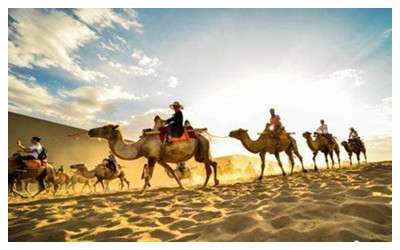Skype: neodalle-travel
Tel: +86 135 7447 2266
E-mail: sales@visitaroundchina.com

 The Silk Road originated in the 2nd century BC. Zhang Qian was sent by Han Wudi to the Western Regions. He was the first person to travel Silk Road on this diplomatic mission in the Han dynasty (206 BC-AD 220). The Silk Road become very busy and popular when Romans fall in love with the silk from China. During the Tang dynasty, 30% of the trade on the Silk Road was comprised of silk. Many travelers come to visit Silk Road every year. Here we list China Silk Road Travel Tips:
The Silk Road originated in the 2nd century BC. Zhang Qian was sent by Han Wudi to the Western Regions. He was the first person to travel Silk Road on this diplomatic mission in the Han dynasty (206 BC-AD 220). The Silk Road become very busy and popular when Romans fall in love with the silk from China. During the Tang dynasty, 30% of the trade on the Silk Road was comprised of silk. Many travelers come to visit Silk Road every year. Here we list China Silk Road Travel Tips:
Which city can be visited in Silk Road Tour?
These days are located along Silk Road and often be included in Silk Road tour:
Xian, Lanzhou, Xiahe, Wuwei, Zhangye, Jiuquan, Jiayuguan, Dunhuang, Hami, Turpan, Urumchi
For sure you also can visit Beijing, Shanghai, Yangtze River, Tibet or any other city before the Silk Road Tour.
Where can i start the Silk Road Tour?
Usually, the Silk Road tour start from Xian or Lanzhou. So you can start from any city which can connect Xian. We suggest you visit Beijing, Shangshang and Yangtze River before fly to Xian.
When to go?
The best time to have a Silk Road Trip is from May to October. The summer can be searingly hot. The winter is freezing. During May, the average temperature along the route is around 15 C. the scenery is most beautiful during May. The accumulated winter snow on the tableland is melting. The grass is turning green. Visitors can enjoy this enchanting scenery without suffering extreme temperatures.
Strong Sunshine and dry air will impress you. Sun-glass, sunshade, sunscreen, lip creams and bottled water is very helpful in your Silk Road visiting. The temperature is low in the evening.
What to bring?
Even during May and October, topography and climate along the Silk Road vary greatly. Some stretches of the road are high and cold, others low and dry. For example, the city of Turpan (sometimes written "Turfan" on older maps), can reach 40 degrees Celsius in the hottest month, August, while it sometimes dips to -20 degrees Celsius in the coldest month, January.
Where to stay?
The Silk Road spans most of China, from modern cities in the central China to isolated villages and towns in the remote west. Accordingly accommodations along the route range from high standard luxurious hotels to somple guesthouse.
How to visit Temples?
When traveling along the Silk Road, a temple is often an important spot visited by travelers. There are some important things to remember, though, in order to ensure a pleasant visit to the temples.
Addressing a Monk: ”shi” or “fashi” is the honorable title of the Monks and Taoists, and “zhanglao”, “fangzhang” or “chanshi” of the Governing Monk. “Heshang” and “chujiaren” are regarded as the impolite way to address a monk.
Proper Manners: put your palms together and lower your head when meeting with the monks. Attempting to handshake, embrace or touch the head of the monk is considered sacrilegious.
Topics of Conversation: topics relating to killing, marriage and eating meat are forbidden. Political and religious topics are sensitive which may lead your Silk Road tour as a bad memory.
Visiting Behavior: Be respectful. Do not touch or deface any religious artifacts, and be silent and nonjudgmental during religious ceremonies.
Gender Issues: make sure that the temple or hall you visit is open to the public and (if you are female) to women.
Safety of Silk Road Tour
China is one of the saftest countries to travel. But you should take care of your money especially in airport, train station or when you walk out of hotel. You are millionaire in the eyes of thief when you walk out of a 4 star or 5 star hotel.
 Ask Questions ?
Ask Questions ?